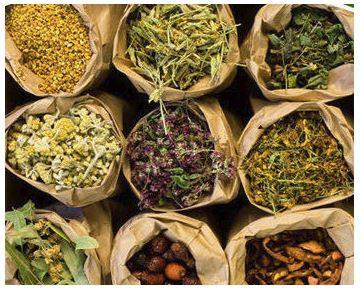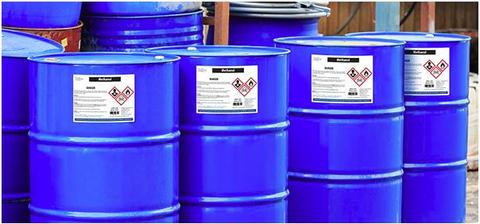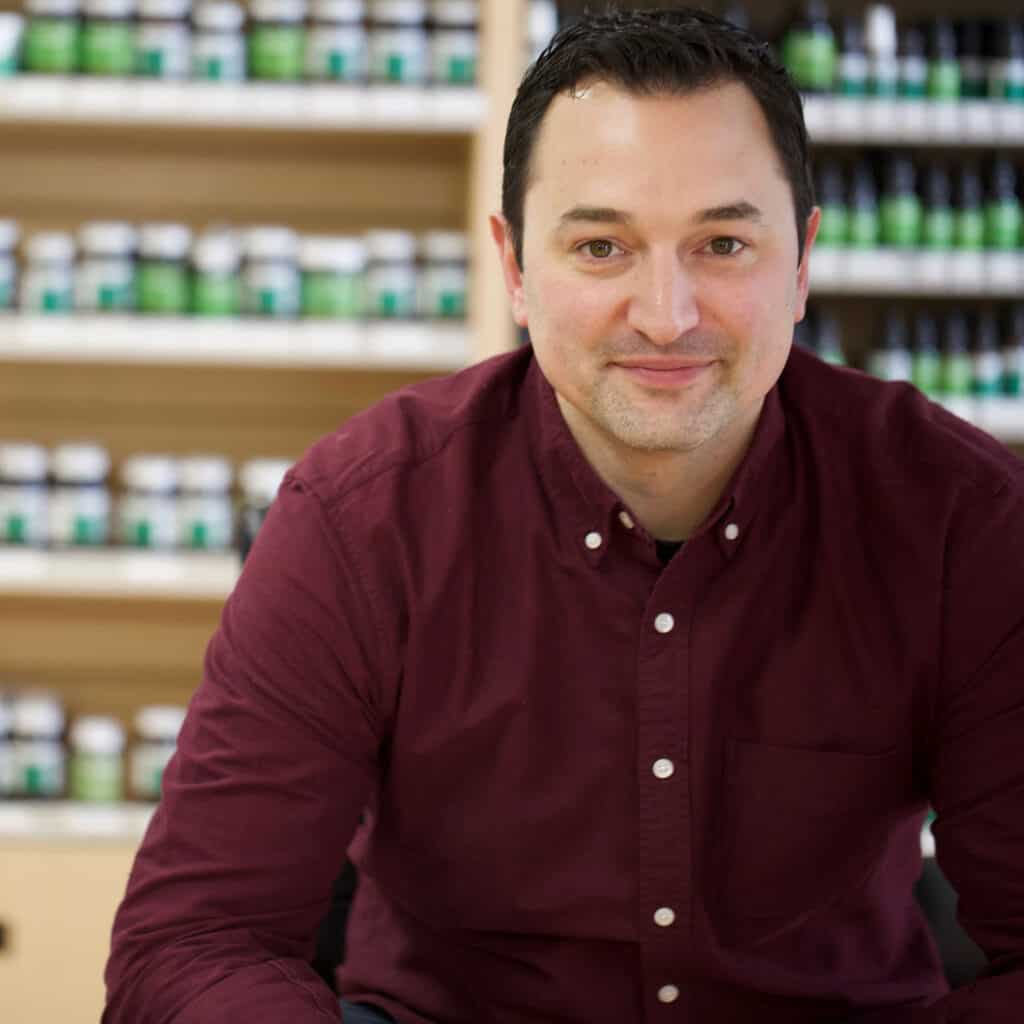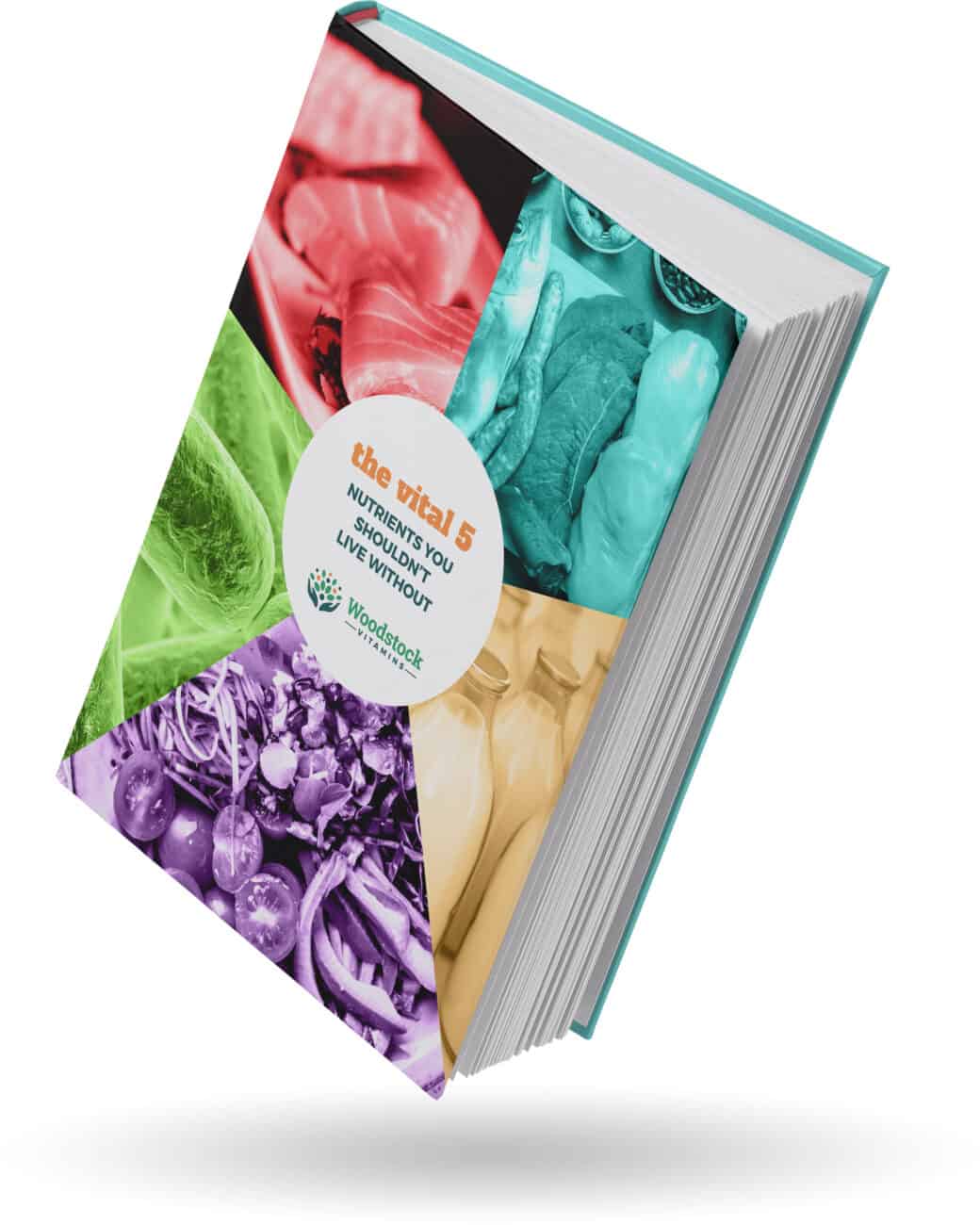Have you got a problem and want a one-size-fits-all solution?
Then turmeric is the answer! Oprah said it best: “You get turmeric, and you get turmeric, and you get some turmeric!”
Maybe she didn’t say that. I don’t watch TV.
Needless to say, turmeric is a hot item. It’s used by practically everyone for practically every reason. We recommend it, but in a more thoughtful manner than many out there in the natural products world.
The most common thing it’s being used for is to support healthy inflammation levels. This, we can live with, and in fact, get pretty passionate about its role for some people.
While we know that turmeric can be a solid option, we here at Woodstock Vitamins also know a little too much about the dirty secrets turmeric keeps.
Before you spend even 1 cent on a turmeric product, you have to understand the truth: things aren’t what they seem – AT ALL. This is almost always the case with the natural products industry, especially with popular products such as turmeric.
This month’s rant focuses on identifying what’s REAL about turmeric, teaches you important questions to ask when buying turmeric, and answers the age-old question: “What’s the deal with the black pepper?”
Turmeric: What Is It Good For?
It’s easy to write an article about what turmeric does or what it’s used for. It’s easy to know these things, and that’s why there are so many “experts” out there talking about turmeric as a miracle agent.
What’s WAY tougher is to understand the manufacturing and quality controls around it. The scope of this article is to discuss these points.
One of our employees recently took a trip to India to actually visit the turmeric farms and raw material processing facilities. They came back with no GI distress but with lots of great, expanded knowledge on turmeric ins and outs. We’ll be hearing more about the trip shortly.
For now, we can easily state that turmeric is used to support healthy inflammation levels in the body. It is definitely a top recommended product by us, but determining if it is right for you or your situation involves more of a conversation.
Don’t hesitate to call, chat, email, or schedule wellness consult with us to determine if turmeric is right for you.
In general, turmeric still is third to nutritional or lifestyle modifications to support inflammation. Essential fatty acids (i.e. fish oil) is still number one, with removing inflammatory foods from the diet, range of motion exercises, stretching, and exercise are second.
Being so close to the top says a lot; it has a clear role above all other supplements that talk about benefiting inflammation.
A properly made turmeric product will have all major curcuminoids (typically there are 3 groups) along with the all the essential oils concentrated to a target percentage. Anything less and you’ve wasted your money.
Let’s Keep It Real
There is a LARGE gap between what people want and what they get as it pertains to turmeric supplements. What’s real about the turmeric most people use? It’s quite simple:
- It’s probably not really turmeric
- It almost definitely contains synthetic components
- There’s a high chance there are harmful chemical substances found in it from processing
- If it does actually have turmeric components, it’s not even getting absorbed by the body
- If it is getting absorbed, the thing that helps it get absorbed is dangerous – interacting with drugs strongly
Looking over that list, that’s pretty serious stuff. One of the biggest obstacles we face with the natural products industry is our perception. We believe that the same requirements enforced upon drugs are enforced upon natural products.
There is no requirement to prove a supplement is even absorbed by the body. This is one of the most obvious and basic requirements of drugs – measuring the absorption, blood levels, and tissue penetration of a drug in humans over time.
We also perceive that any product labeled “turmeric” must be the same, just like any amoxicillin capsule will be the same manufacturer to manufacturer, pharmacy to pharmacy. We say, “of course there are no harmful contaminants in there, it says it’s natural!”
Until we truly understand what supplements aren’t, we won’t be able to get the results from what they are.
Turmeric Food vs Turmeric Supplements
Something we should briefly touch on before we talk about turmeric to a level that makes even nerds nauseous is the difference between food turmeric and supplement turmeric. I am going to do so using my new very graphic (but very “me”) analogy some of our locals have been treated to.
Imagine for a minute that I found out that my kidneys are magical. A supplement company wanted to make a new product: “Neal’s Kidney Capsules.”
There are two options. Put me into a meat grinder, mix me up well, then put me into a capsule. If you mix well enough, you’ll get some amount of kidney inside each capsule.
What’s best would be to take out the kidneys (put someone else’s in, if you don’t mind), mix them up, and make capsules out of that. (I told you it was a graphic example…)
This is the difference between “whole herb” and an “extract”. A turmeric plant is less than 10% active components: curcuminoids and essential oils.
Dietary turmeric is the “whole herb”: you’ll get some of the compounds that have the studied health benefits, but 90% of it is water and fiber.
Further still, when we eat turmeric, we are using small amounts. To yield the right dose, a single supplement would contain extracts from multiple plants.
When we eat turmeric, we’re not eating a single whole plant, but a portion of a whole herb, which would then contain even smaller amounts of the “active” ingredients. We then are processing it and mixing it with other things (like water), which will cause any “actives” to be degraded.
In general, when we use a botanical in a dietary manner, we are not getting enough of the right ingredients to make a major change.
This isn’t a problem if you are deciding to incorporate something healthy in your diet for the long-term health benefits.
Turmeric from the grocery store is a healthy spice that can be added to our foods. Just don’t expect it to give you direct, dramatic results like those found in clinical trials.
One more trick when it comes to herbs: some supplements are whole herb, not extracts. It bears repeating: in an ideal world, a botanical supplement is a proper extract of all active constituents. The dose would be standardized to give the results that have been demonstrated in well-constructed trials.
Always check to be sure your herbal supplement is an extract or whole herb – that may be a big differentiator in your results.
The way we must train ourselves to think is, “What is it IN the thing that is beneficial, and am I getting enough of it?”
The 5 Sins of Turmeric Products
Let’s walk through each of the points one should know when buying turmeric supplements. We’ll start with the most dramatic, abhorrent practices, then work back towards choices that make products (like ours) best-in-class.
“It’s Probably Not Real Turmeric & It Contains Synthetic Compounds”
We covered this in a past rant, but it bears repeating. Pretend you are a shady supplement manufacturer… What’s better than buying proper raw materials for turmeric and doing all of the important work to ensure the product is pure and potent?
I’ll tell you what – completely disregarding any ethics and buying the cheapest product that SAYS it is turmeric and doing the absolute minimum necessary to validate that.
Remember, herb manufacturing doesn’t involve someone pulling fresh plants over a local, organic farm, and a hippie grinding each plant up in a mortar and pestle to make the individual doses. Most raw materials look nothing like this:

But look more like this:

If I asked you to make cookies, you would get your raw materials, follow a recipe, and make sure your kitchen and utensils are clean and up to code. Your sugar (a raw material) would probably be Domino, and you would buy it from a reputable grocer (raw material supplier).
What if you got it on The Green here in Woodstock from a guy holding a paper bag with “SUGAR” written on it in sharpie? You can look inside and see white, granular powder. It kinda looks like sugar.
The only way we would know it is actually sugar is to test it thoroughly. Then we’d have to test for ANYTHING ELSE that could possibly be in there – contaminants and the like.
To verify the big drum of yellow powder labeled turmeric is actually turmeric, many places do very few tests. Typically they are just testing for the curcumin levels, which is one of many beneficial compounds in turmeric.
Well, curcumin comes from turmeric, sure, but it also can be synthesized for a fraction of the price by using petroleum. Yum.
Theoretically, I could use a cheap, inert powder like rice powder, add in some yellow dye, then add in enough curcumin to give it the appearance of being real, potent turmeric.
And that’s what happens. But it’s way worse. The dye is a banned carcinogenic dye. There are LOTS of adulterants potentially present. There may be solvent residue and other contaminants in the container, including heavy metals.
Even the best of the worst is a problem. Say they use an acceptable dye and clean rice powder. You can’t call something turmeric if it is just synthetic curcumin. It should be called synthetic curcumin. Or am I losing my mind?
Finally, and importantly – synthetic curcumin doesn’t work. Based on over 120 studies, curcumin alone was found to be ineffective. You need a proper turmeric extract.
Raw materials have an established, normal cost. Ignoring random spikes due to shortages, you have an idea of what many raw materials cost – wood, bread, gas, etc.
We have that same knowledge about raw materials in the supplement industry. If something that typically costs $100/kg can be purchased from a supplier for $8/kg, that’s not usually indicative of anything good.
Speaking of cost – don’t think that brands won’t charge you premium pricing. It is the proverbial dressing up of the pig.
Turmeric’s Dirty Cousin
Another trick the turmeric trade uses is a bit of the bait and switch. These two in the following picture are twins. Can you spot the difference?

Though twins, they are quite different. Turmeric raw material suppliers will do this; they’ll use other plants in the same family and call it turmeric. It passes basic visual inspection – same color and smell – and even has similar levels of some of the active compounds found in turmeric. But not all of them.
One example in particular that is often used is a close cousin of turmeric. It contains 2 of the 3 main components. Close but no cigar.
The bait and switch isn’t that big of a deal if they labeled it properly and were transparent. It is obviously deception, though, since they lead everyone to believe it is still turmeric.
“There’s a High Chance There Are Harmful Chemicals…”
Back to my kidneys for a second. To get them out, there’s a specific process that’s pretty involved to ensure we get out as much of the kidneys – and nothing else – that we can.
The same holds true for herbs. How do you get the good stuff out and nothing more? Simple, you use an extraction agent.
There are numerous solvents or fluids that can be used to pull out all the helpful compounds from herbs. The most effective are often the cheapest, but I wouldn’t be typing this up if it was a win-win.
The most common extraction agents are carcinogenic, harmful substances: hexane, acetone, and ethylene dichloride.
We don’t want anyone to get exposed to ANY of this if we can help it. Some in the industry spin it by saying the amounts are super low, trace amounts.
Well, if you are like most patients, you are taking multiple doses of MULTIPLE products over a LONG period of time will result in a larger exposure than can just be categorized as “trace.”
It gets even trickier with turmeric. We know they use these nasty things to extract the turmeric, yet raw material suppliers brag that their product is free from solvent residue. Thank goodness we’re such a nerds.
Turmeric extracts form crystalline molecules, which basically surround and hide the solvent residue. Unless you use the correct, more expensive, and more involved test, you won’t find it.
This is a known trait of turmeric; brands that aren’t doing the proper testing are intentionally doing minimum necessary and are exposing people to harmful compounds.
It would be better to use safer extraction methods like alcohol, water, or CO2 extraction. But they have lower yields and cost a bit more, so finding brands that take this extra step is rare.
“If It Is Turmeric, It’s Probably Not Getting Absorbed.”
Let’s now move out of the worst-case (but usual) scenarios of adulteration and contamination and move towards a well-made turmeric.
There are important concepts to understand about turmeric unrelated to corner-cutting in the industry, specifically about the properties of turmeric itself.
The first thing you must realize is that turmeric, on its own, is useless. You read that right.
The amount of a compound available to use by the body after being administered is called bioavailability. A product with HIGH bioavailability means that after taking a dose, a large percentage of it is absorbed and usable by the body.
When we take turmeric, it’s barely getting absorbed, and when it does, it gets tossed out SUPER quickly. Our body is quick to prevent most turmeric from being absorbed. It metabolizes it in the intestinal wall, our gut blocks unmetabolized stuff from getting absorbed, and anything that gets pass the goalie goes directly to the liver where it is dealt with and kicked out of the body almost immediately.
Turmeric has REALLY bad bioavailability. To the point that it is generally useless. One study showed that 2 grams of curcumin is nearly undetectable 30 minutes to a few hours after taking it – meaning a BIG dose won’t even do anything because of how poorly it is absorbed.
There’s a trick to get turmeric into the bloodstream. Black pepper. Boom – there’s the answer to the essential turmeric question. But it’s not just the regular black pepper you’d find at a restaurant.
It’s a special extract of an ingredient in black pepper that makes all the difference. There’s so much going on there, we’re giving black pepper extract its own section.
Black Pepper And Its Role In Turmeric
First off, what’s up with these ridiculous pepper mills at some fancy restaurants? We were at a local place here and they bring out a mutant pepper mill that looks like these:

Anyway, the compound found in black pepper that gives it its unique smell is called piperine. This, when extracted and concentrated, can help improve the bioavailability of other compounds.
Turmeric is no different; piperine can help turmeric get absorbed and stops it from being broken down by the liver. There is almost a 2000% improvement in absorption because of it.
Piperine doesn’t work in mysterious ways. We’re very aware of how it works to perform miracles, and unfortunately, it can be a problem.
First, piperine makes the “gates” in between the cells of the gut (where drugs absorb) more open. Why is this a problem? Well, our studies on drugs are based on basic, not augmented physiology.
If we study a drug in humans, we want them to be as normal as possible – no additives or agents should be used to make a drug absorb better.
If in normal situations only 50% of a dose is absorbed by the gut, but then we add something like piperine that causes 90% to be absorbed, we’re going to have a problem.
We’ll be getting almost double the amount into the blood, which can lead to serious short and long-term complications. Imagine how good you’d feel just doubling your dose of blood pressure medicine one day.
Secondly, piperine blocks some liver enzymes from working. The enzymes are like wood chippers. If a drug goes to the liver, it’s fed to the wood chippers and turned into useless fragments and sent out of the body. What if we turned off half or more of those wood chippers?
The compounds that would normally (and predictably, if our studies were good) be chipped away all of a sudden aren’t, we’ll have vastly higher blood levels of the drug, which could be as bad, if not worse, than taking double a dose of a medication.
This is all fine for turmeric. We NEED to get more of it into the blood. We NEED to stop the liver from breaking it down. But we don’t live in a vacuum; we take other supplements and drugs that will almost definitely be affected.
Taking piperine can cause the following drugs to accumulate in the blood:
- Chemotherapeutic drugs
- Immunosuppressants
- Antibiotics like erythromycin
- Sertraline, citalopram, or amitriptyline
- Some opioids
- Benzodiazepines like Valium
- Cholesterol drugs
- Hormones
- and more!
We don’t know the degree to which piperine acts or how significant these interactions can be. What we do know is that it is doubtful ANYONE at a health food store (or otherwise) would mention it before you buy turmeric.
Turmeric Sins (continued)
More on Absorption…
Brands have started to use the bioavailability of their turmeric as a marketing piece. “Ours is 100% more bioavailable,” screams one brand. “Try our turmeric, now 13000% more bioavailable!” says another exaggerated example I made up as to not get sued for calling people out directly.
The thing is, these numbers are nonsense. When testing bioavailability, these brands are using the curcuminoid metabolites, not the amount of curcuminoids actually present. We would EXPECT curcuminoid metabolites to be high after taking it – it’s broken down almost exclusively, metabolites should all that’s left.
While curcuminoid metabolites do have some antioxidant effects in the blood, they completely lack any impact on anti-inflammatory pathways.
When determining a good turmeric to use, look for a brand that tests free curcuminoid levels in the blood, not their metabolites.
Everything Changes
I’m a pharmacist. I know medicine is a practice; it’s constantly evolving and our understanding is changing. The recommendations we make get more sophisticated as more data comes to light.
We were one of the first retailers to point out the problems with turmeric manufacturing, adulteration, and contamination years back.
We required our turmeric products to be full extracts containing all curcuminoids and not just high-dose curcumin. Unfortunately, all of the products previously had a low dose of piperine, so there were limits to what we could and couldn’t recommend for people.
Now, we’re going to be one of the first to draw a big line in the sand about how we recommend turmeric products. We will be discontinuing turmeric products that contain the black pepper extract, in response to the safety data that is becoming more and more clear.
Turmeric – Our Recommended Product
To make a good turmeric product, you have to avoid all the problems we discussed, then make sure the turmeric actually gets into the blood, then stays there to get to the tissues to ACTUALLY do something.
We’ve found a unique raw material of turmeric that answers many of the questions about quality – and does so definitively. BCM95 is a unique, proprietary turmeric extract that has better absorption and can maintain levels better than typical turmeric products.
It does so WITHOUT piperine, so there is no exposure to potential drug interactions.
BCM95 has extensive data on its absorption and blood levels (more so than most turmeric materials on the market). It measures and compares against FREE curcuminoids, not metabolites.
Our manufacturer exceeds our Vitality Approved Standards for manufacturing and does all the tests a little boy could ask for around turmeric.
We’ve named our product Curcumin Supreme, which, now that we think about it, isn’t a great name. We’ll probably rename it in the future. Come up with a good name and we’ll give you a free bottle 🙂
Get Real, Get Real Turmeric
Turmeric is definitely one of our most rant-worthy supplements in recent memory. With popular products, it’s almost guaranteed that brands will cut corners, often with potentially dangerous effect, in the name of profits.
It costs more to do the right thing. It takes more energy. But can we get real for a bit? When did making ALL the money replace doing good and making ENOUGH money?
We hear the noise out there and it is shouting “TURMERIC!” We may want to try it because of the potential and the promises made, but there’s more work to be done than simply selecting any product on any shelf.
While we truly LOVE to do that work for you, we’d much rather empower you to be more skeptical as well.
If we understand the liabilities of turmeric products (or any supplement, for that matter), we can choose products and brands more wisely.
When we have a properly made turmeric supplement, we can have higher expectations for results. We can ensure that we’re not throwing good money after bad. We can be certain that we are, in fact, making the best decisions for our health.
We can only do so, however, if we get real about the supplement industry and all the tricks they play.
Just trying to keep it real…

Neal Smoller, PharmD
Owner, Pharmacist, Big Mouth



